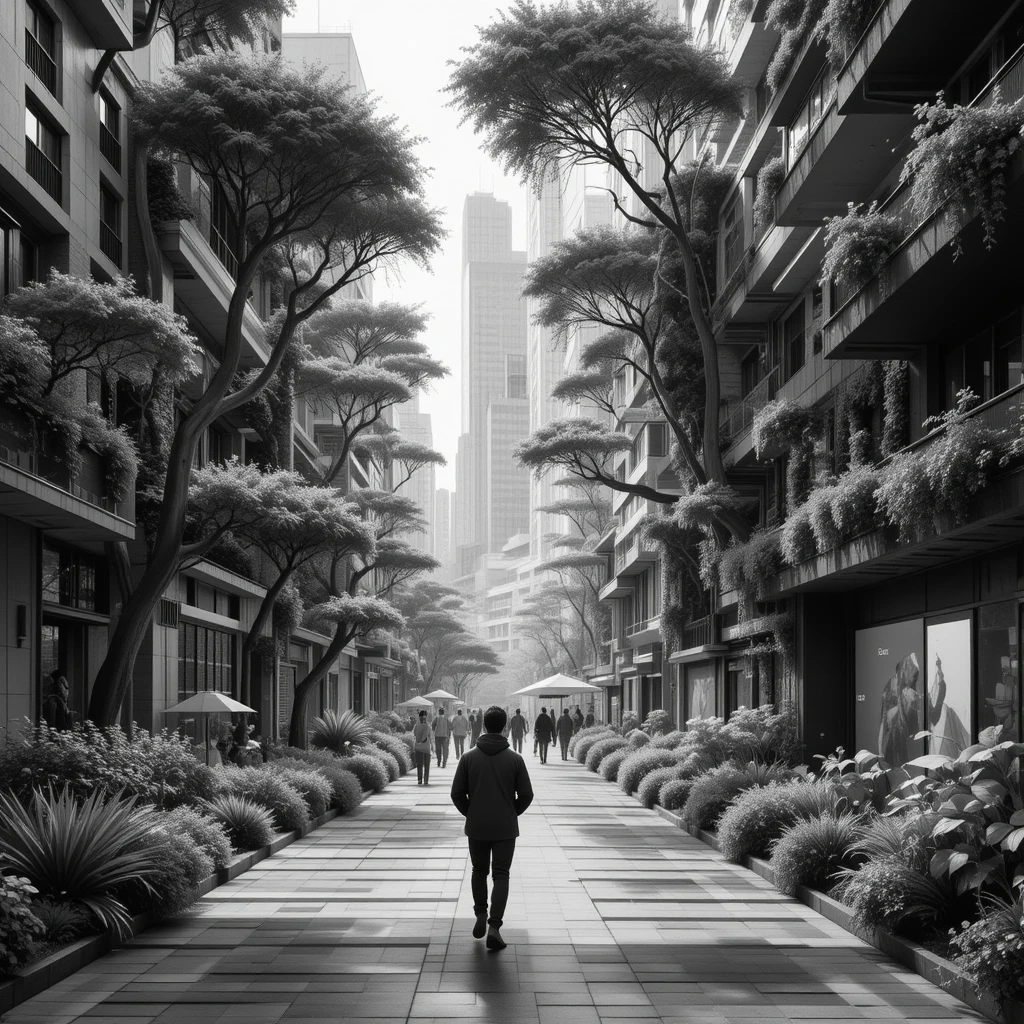The morning wasn’t supposed to start with green light filtering through his bedroom ceiling.
.
Will Hunter blinked. The texture above him wasn’t plaster, but something alive—somewhere between woven reeds and mycelium. The air held the scent of river moss and citrus. He sat up slowly.
.
He wasn’t in his room in Ames anymore. He was somewhere else. Somewhere dreamlike. The city hummed beneath him, not with engines, but with breath.
.
He walked barefoot on streets made of kelpcrete—an algae-infused bio-compound that flexed slightly with each step. Trees grew through structures like veins through skin. One building bowed gently, reacting to the sun’s angle, offering shade to children playing below. They weren’t buildings—they were companions.
.
A transit pod floated by, wrapped in moss, pollinating the vertical gardens it passed. From one balcony, rainwater trickled through hanging vines into a small biopool, filtering itself before dripping onto a lower terrace of ferns.
.
“Every surface is working,” Will whispered. “Every edge is alive.”
But Is It Design?
A woman, draped in a coat made of shimmering leaves, sat beside a bioluminescent fountain. “You’re wondering if this is architecture,” she said, without looking up.
.
“I think it is,” Will replied. “But I also think it’s… beyond it.”
She smiled. “Living systems. Design that doesn’t just imitate nature—but becomes part of it.”
What Is Designing with Living Systems?
Not sustainability. Sustainability is status quo maintenance. This is regeneration.
Not just planting trees. This is designing as an ecosystem.
Biomimicry, permaculture, symbiosis—principles that form not buildings, but organisms.
Designing with living systems means:
Buildings that sweat and breathe.
Materials that heal themselves.
Cities that grow food, filter air, and evolve.
The Real Dream
Will stood beneath an arched walkway made of living willow. A group of kids chased butterflies that pollinated the city’s air scrubbers. There were no sirens, no horns, no signs. Only patterns. Cycles. Soft systems.
.
He asked aloud, “Where do I even begin designing like this?”
A mossy wall blinked a response:
“Start by unlearning. Then listen to the forest.”
Will woke up to a beeping phone alarm. The scent of his dream still clung to his sweatshirt. He opened his notebook and wrote:
“Design should not ask ‘How do I make this?’ but ‘What can I learn from the way the world already works?’”
This fictional story is set within the dreams of Will Hunter, a character created to explore the intersection of imagination and design. Dive into his dreamscape and discover how storytelling can illuminate real-world lessons in architecture and creativity.
Some of the links on this website may be affiliate links. This means that if you click on the link and make a purchase, we may receive a small commission. We only recommend products and services that we genuinely believe will be beneficial to our readers.



